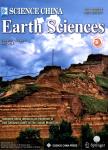Spatiotemporal characteristics of the expansion of an urban agglomeration and its effect on the eco-environment: Case study on the northern slope of the Tianshan Mountains
Spatiotemporal characteristics of the expansion of an urban agglomeration and its effect on the eco-environment: Case study on the northern slope of the Tianshan Mountains作者机构:Institute of Geographic Sciences and Natural Resources Research Chinese Academy of Sciences Beijing 100101 China College of Resources and Environmental Science Xinjiang University Urumqi 830046 China Xinjiang Institute of Ecology and Geography Chinese Academy of Sciences Urumqi 830011 China
出 版 物:《Science China Earth Sciences》 (中国科学(地球科学英文版))
年 卷 期:2019年第62卷第9期
页 面:1461-1472页
核心收录:
学科分类:07[理学]
基 金:supported by the Major Program of the National Natural Science Foundation of China (Grant No. 41590842) the Strategic Priority Research Program (A) of the Chinese Academy of Sciences (Grant No. XDA20040400)
主 题:Urban agglomeration Tianshan Mountains Spatial expansion Temporal and spatial evolution Ecological environmental effect
摘 要:Urban agglomerations, which are highly integrated urban groups, form during the advanced stages of industrialization and urban development. The urban agglomeration on the northern slope of the Tianshan Mountains is one of the 19 urban agglomerations promoted by China’s 13th Five-Year Plan and a key area of urbanization in Xinjiang. Based on remote sensing data, we analyzed the expansion of construction land in the urban agglomeration on the northern slope of the Tianshan Mountains and its effect on ecological value in 1980–2015. The results show that the expansion of construction land significantly affected ecological value in the study area over the past 35 years. Among land use types, grassland was the dominant contributor to changes in ecological value;its contribution rate reached 66.27% with an interannual variation of only 5%. The contribution rate of urban and rural residential land along with industrial and mining lands was very low(0.82%), while the interannual variation was large(86%). The area of construction land in the urban agglomeration expanded from 1,067 to 2,586 km^2, and the conversions of different land use types had different effects on ecological value. Among land use types, the conversions of lowcoverage grassland and dry land made the largest contributions to changes in ecological value. During the study period, a total of 1,685 km^2 of ecological land, 69.91% of which belonged to cultivated land and grassland, was converted into construction land.A total area of 1,082 km^2 of dry land and low-coverage grassland was converted into construction land, accounting for 64.21% of the total ecological land that was converted into construction land. In 2000–2015, the area of urban construction land increased significantly along with the proportion of unused land, including gobi(172 km^2), bare land(65 km^2), and salt-affected land(65 km^2), being converted into construction land. In contrast, the area of construction land that was converted into ecol



